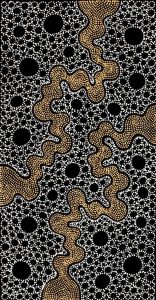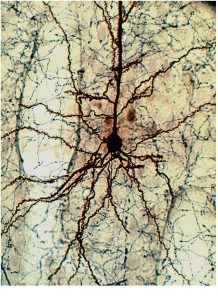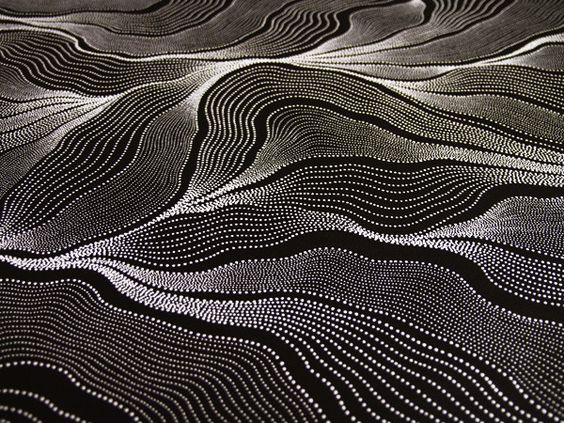My Country, Aboriginal Painting by Anna Petyarre
Is there a map to guide our way or chart our winding pathways, not from A to B but in these choices that carve the course of our lifetimes? Do we follow the tides? Constellations of stars? Signposts erected by others? Do we swim against the current or do we trust in the compass of our instincts to steer us from resistance to what feels good? Where are we trying to get to?
We travel these roads back to our homelands, landscapes that morph and slide through times, paths and rivers weaved of the dreams of memory. These trees our old friends. Well walked lanes that watched us change and grow. Hills that shared all the tales of love, joy and sorrow that made us.
This morning the dawn light rises through the mist; and we meet these ancient places as if for the first time. The wind dancing the leaves wraps timelessly around us, old as time yet familiar, untouchably home. And this road we walked as a child, as a teen, as an adult, is like never before, and the land reflects us back to ourselves. “Emmenez-moi, chemins!” – Carry me along, oh roads, wrote Marceline Desbordes-Valmore (Un Ruisseau de la Scarpe),
“O, mes chemins et leur cadence” – Oh my roads and their cadence – Jean Caubère (Déserts : Poèmes)

Thoreau said that he had the map of his fields engraved in his soul. The Australian Aboriginals mapped their lands in song-lines; a network of dreaming tracks that web across the Australian continent. Clans share the songs, each clan singing their land’s verse, and meeting with the next clan, who continue the journey of song.
“Our story is in the land … it is written in those sacred places … My children will look after those places, That’s the law.” – Bill Neidjie, Kakadu elder
The land is a map, these lands that hold the bones and standing stones of our ancestors. These rocks, birds and rivers that steered them. This river that divides nations and splits my identity in half. This path that leads to the garden and rooms of my childhood. This oak, the first tree I touched and called Tree. This door, the first door I opened unaided and stepped through.
These paths and trees we meet, these doors we open, we perceive through our memories; our mind’s great library of paths, trees and doorways. Unseen emotional echoes tell us where they might lead to. A tree I fell out of. A door I smashed when my brother shut me out. A fist healed with love and stitches. A tree I learnt to climb again. A new door we entered together.

I’ve carried my paths with me, with all the pain of their heartbreaks and mistrust in their safety. I fled to other lands to find only the same junctions, journeys of choices that span round and round again. How far I travelled to find a place on the map or fix a broken pathway, not knowing I was always trying to come home to the moment, the still point where all the pathways in my brain meet, and feel my body held by the earth. If there is a map in the land then it always leads homewards, every path stretching out from the heart.
These paths we journey are not the same to you or I but still we walk them side by side to the meadows that know us as children, weaving our stories across dreaming tracks forged in the land long before us.
“Each one of us then, should speak of his roads, his crossroads, his roadside benches: each one of us should make a surveyor’s map of his lost fields and meadows.” – Gaston Bachelard, The Poetics of Space


+There are no comments
Add yours